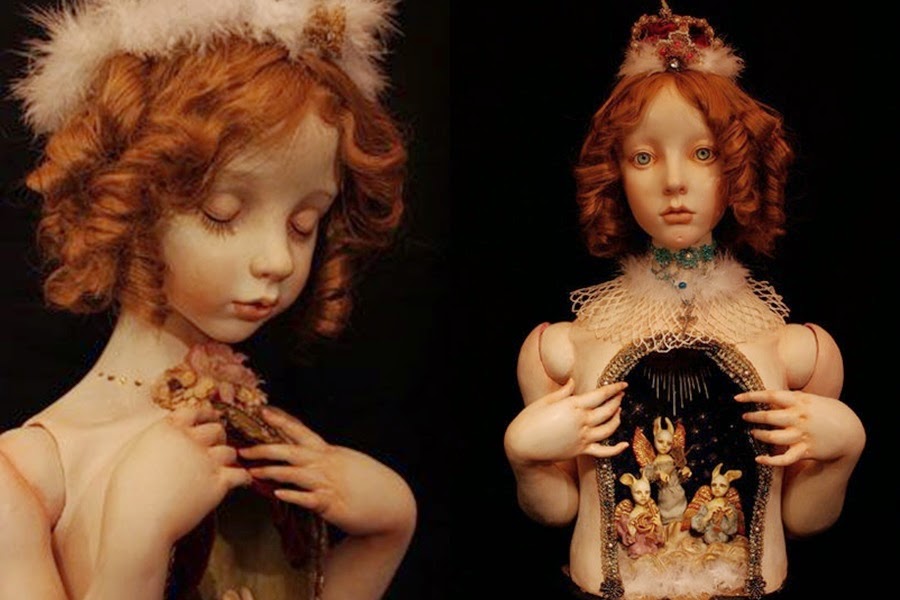

In the times of our childhood, dolls were often objects of comfort. Yet somehow as we age, these items never arouse the sentimentality and nostalgia of other childhood treasures. Instead, in our older age we associate them with a vague sense of discomfort and uneasiness. Countless artists through an array of different mediums have expounded upon this fear or discomfort, whether to confront us with an issue or just simply to scare us.
This discomfort is instantaneous when one looks at the artwork of Mari Shizimu, a dollmaker hailing from Kumamoto prefecture in Japan. She taught herself how to make ball jointed dolls, a form of dollmaking that dates back to Ancient Rome and Greece. However, the first Asian-based ball jointed doll was called Super Dollfie, created by the company Volks. These dolls are often collected, custom-made, hand painted and extraordinarily ornamental. Shizimu continues this tradition with her painstakingly detailed pieces, while simultaneously pushing the traditional concept of a doll as a plaything to fine art contemplating the exterior and interior identity.
Uncomfortably juxtaposing the eerie serenity of a doll’s face with clutter bursting from their porcelain torsos, many of Shizimu’s dolls focus on the doll from the waist up. The dolls are cut open, their resin edges framing delicately a scene that often invokes the dioramas school children make. The internal scenes often play upon familiar Christian iconography, from Adam and Eve to angels to a figure reminiscent of the Virgin Mary. Other common scenes include asylum inmates, anthromorphic rabbit people indicative of Alice and Wonderland’s white rabbit, freak shows and organs that seem peeled out of an antiquated medical textbook. We associate this conglomeration of motifs encased by the calm, emotionless doll-body with that of the Victorian era, an era notorious for the outward appearance of grandeur and purity masking a horribly corrupted political and social system. Through her dolls and the associations they provoke, Shizimu reminds us that the appearance of ‘serenity’ often masks a deeper turmoil. In fact, the façade of serenity is actually the countenance of defeat and surrender.
The juxtaposition she confronts viewers with plays at that general anxiety we often associate with the expressionless faces of dolls. When we look at a doll, we consciously know there is nothing dangerous about it, and yet it can still conjure a slight sensation of fear. By peeling away the layers of the figures she creates to reveal the creepy and unsettling inner workings, she hints at the root of the fear — that there could be something behind that hollowed mask. Her dolls operate in the ‘uncanny valley’ — they are extraordinarily realistic and identifiable as humanoid but lack some of the familiar details that put us at ease. They remind us of empty bodies, hollow shells of us ourselves, just by their neutral expression and their inhabitation of the uncanny valley. They fact that they are neutral is terrifying, for the certainty of their innocuousness cannot be guaranteed. In revealing horror within the bodies of the dolls, Shizimu confirms our fears of dolls to be true — that evil can take up residence in these neutral vessels.
Many say that toymakers paint neutral expressions on the faces of their toys, so that children may project whatever emotion they want onto the object. As we get older and become more adept at reading facial and bodily expressions, perhaps we lose this ability to project emotion onto the dolls. We lose the comfort of making the dolls into what we need it to be. Instead, we see it as a relic of childhood, memories trapped inside the hollow mask of the doll that is rendered to us now as utterly indifferent.